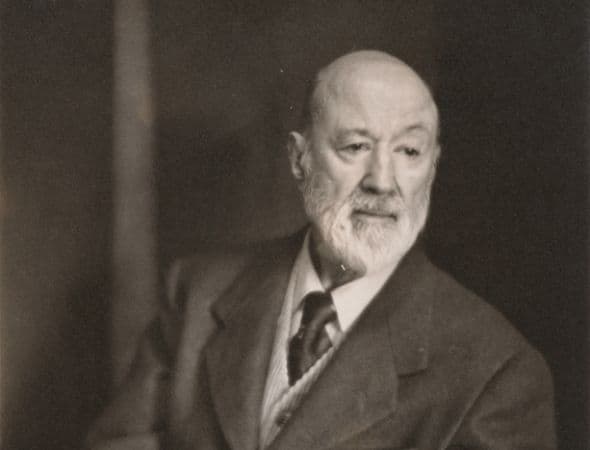IVES: Symphony No. 2
by Jeff Counts
THE COMPOSER – CHARLES IVES (1874-1954) – Quite simply America’s most iconoclastic musical artist, Charles Ives was a radically unique innovator for most of his compositional life. No voice was more distinct, no music more ahead of its time than that of Ives. Proper adulation and reward came very late for him however and, right after his graduation from Yale, he pursued a parallel career as an insurance salesman (and eventual top executive) as a means of making sure his future wife and kids would never “starve on his dissonances.” This pragmatism was an abiding principal of his life, and resulted compositionally as a prediction of the found object art movement.

THE HISTORY – Symphony No. 2 dates from as early as 1900 but was not completed and fully scored until around 1910. Though he was already leaning in a more modern direction, his professors at Yale required him to write a traditionally European symphony to complete his degree. That was the Symphony No. 1 which, by every measure, met their demands nicely. For a successor work, Ives was eager to incorporate the sounds and traditions of America in ways no previous musician had yet attempted. He would grab up great armloads of existing material and assemble them into a fascinating sonic collage. Symphony No. 2 was the first large-scale work by Ives to use this scrapbooking method for its construction, and he did not limit his ingredients to American culture alone. Embedded among quotations from “Columbia, Gen of the Ocean”, “America the Beautiful”, and “Camptown Races” are fragments of Dvořák’s “New World” Symphony, Beethoven 5, and even something from Wagner’s Tristan and Isolde. What point Ives was attempting to make by juxtaposing the “high” and the “low” of musical expression is something he kept to himself, then and ever, but he often spoke of the need for art to reflect actual common life as much as the cloistered tastes of the elite among us.
The premiere of Symphony No. 2 did not occur until February of 1952. Leonard Bernstein conducted the first performance with the New York Philharmonic at Carnegie Hall but Ives himself did not attend. He had to be forced to listen to a radio broadcast of the performance and, as the story goes, he did so without comment or celebration. Not even the enthusiastic applause of the recorded audience earned a smile from the composer who, according to biographer Jan Swafford, “got up, spat in the fireplace and walked into the kitchen without a word.” Perhaps this equivocal piece, caught as it was between old world history and new world innovation, was far too “soft” (Ives’ own term for it) by his own mid-century standards. Perhaps he was just too proud to still be proud of it. Either way, like usual, Ives wasn’t talking.
THE WORLD – Elsewhere in 1910, Halley’s Comet appeared, Montenegro declared itself an independent kingdom and the Olympic, first ship of the class that included the Titanic launched.
THE CONNECTION – The most recent Masterworks series performances of Symphony No. 2 were in 2017 as part of Thierry Fischer’s exploration of Ives’ complete symphonic cycle.












